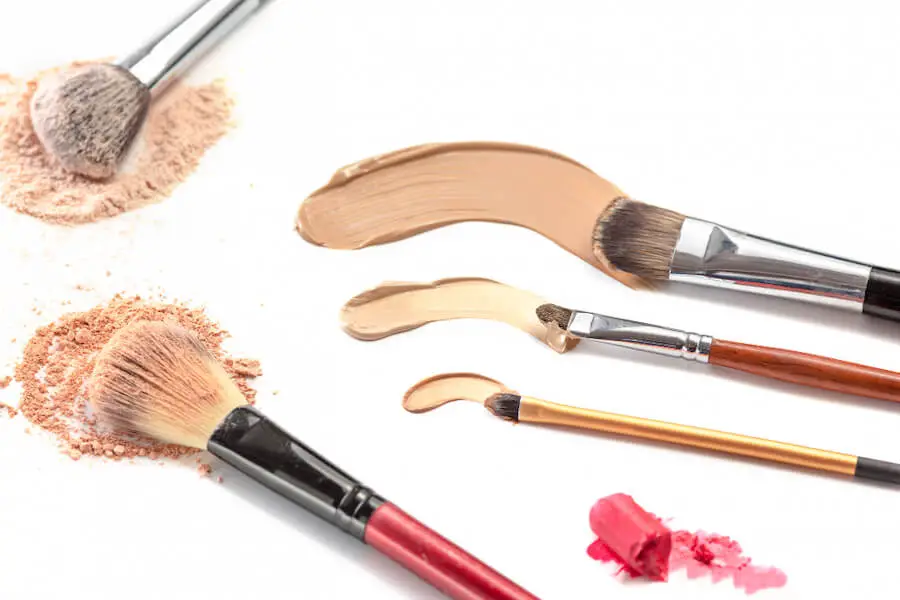Olive undertones are a popular way to get a sun-kissed look without using a self-tanner. Some people may have naturally olive skin, but many use it as a way to enhance their natural coloring.
When it comes to adding olive undertones to a foundation, there are a few different ways that you can go about it. One way is to mix a small amount of green or yellow eye shadow with your foundation.
Another way is to use a green concealer or primer before applying your foundation. Finally, you can also apply a light layer of olive-colored eyeshadow to your lids before applying your foundation.
Now let’s look at these in more detail.
1. Using Eye Shadow
If you want to add olive undertones to your foundation using eye shadow, you’ll need to choose a shade that is close to your skin color. You can mix it with your foundation or apply it on top.
Just make sure that the shade is matte, as shimmery shadows will only enhance any discoloration.
If you’re using a liquid foundation, mix a small amount of eye shadow with it until you get the desired shade. If you’re using a powder foundation, dip your brush into the eye shadow and then swirl it around in your foundation.
2. Using a Primer
If you want to use a primer to create olive undertones, look for one that is the same color as your foundation. As with eye shadow, you can simply swirl together or mix to get the desired shade.
You can also use a green concealer on your skin before applying your foundation. This will help to neutralize any redness and create a more olive complexion.
3. Using an Eyeshadow Palette
While it’s possible to use a green eyeshadow palette to add olive undertones to a foundation, I wouldn’t particularly recommend this method.
The reason is that it can be difficult to get an even application with a brush, and you may end up with more eyeshadow on your face than you intended.
A better option would be to use an olive-colored eyeshadow as a base before applying your foundation. This will give you a more subtle effect and help to create the appearance of olive undertones.
What undertone is closest to Olive?
We all have that one friend who seems to be able to wear any color and look amazing. And we all want to know their secret. The answer? Knowing your undertone.

Undertones are the colors that show through your skin, and they can be cool (blue, pink, purple), warm (yellow, orange, red), or neutral (a mix of both).
Olive skin tones have an olive green color with yellow undertones. The most common Olive tone ranges between medium-toned olive skin with warm golden brown eyeshadow colors, or dark-toned olive skin with deep black eyeliner colors.
However, there are also some olive skin tones that lean more towards cool shades like grey and silver.
So, if you’re lucky enough to have olive skin, then knowing your undertone is the first step to shopping for the right makeup colors that will enhance your natural beauty.
How to find the right foundation for olive skin?
In the past, many foundations were made with pink undertones. But if you have an olive complexion your undertone will be yellow-golden which is not always represented in brands’ ranges of shades.
The first approach entails trying different shades of foundations until you find one that matches your skin’s undertone.
The second thing to do will involve finding a shade with just medium coverage as sometimes those can be less orange than full coverage products.
You should also consider whether you would like something matte in texture before making your final decision about which product will best suit your needs.
There are many makeup brands that cater to olive skin tones these days, which means there’s no better time than now to take control of your beauty.
Final Thoughts
So, the methods listed above are three different ways that you can add olive undertones to your foundation. Whichever method you choose, just make sure that you take the time to blend it in evenly. Otherwise, you may end up with a patchy finish.
Remember that it is possible to use multiple methods at the same time, but make sure you are aware of which ones you are using. In some cases, this will give you more even coverage and help to create the look of olive undertones.
And finally, don’t be afraid to experiment until you find the products that work best for you. With a bit of trial and error, you’ll be able to create a foundation routine that highlights your natural beauty.

